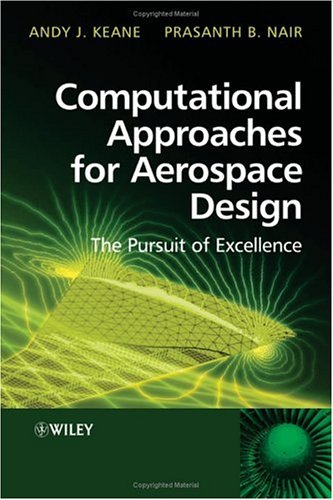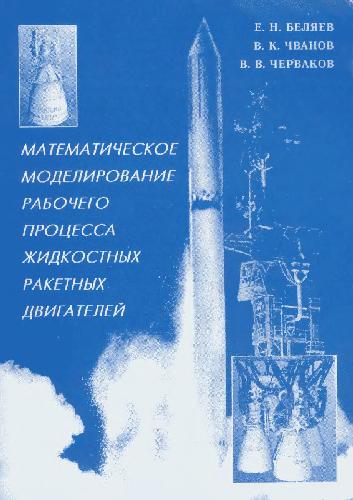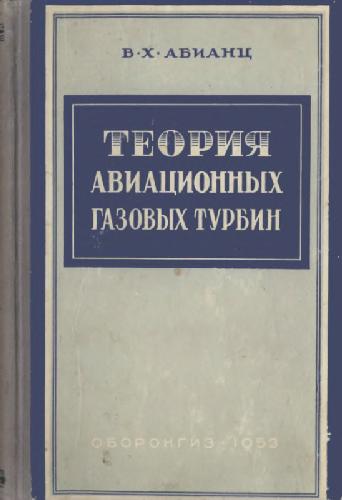Prof. Andy Keane, Prasanth Nair0470855401, 9780470855409, 9780470855478
Table of contents :
Computational Approaches for Aerospace Design……Page 3
Contents……Page 9
Foreword……Page 19
Preface……Page 21
Acknowledgments……Page 23
I Preliminaries……Page 25
1.1 Objectives……Page 27
1.2 RoadMap –What is Covered andWhat is Not……Page 28
1.3 An Historical Perspective on Aerospace Design……Page 29
1.3.1 A Pair of Early Pioneers……Page 30
1.3.2 A Pair of Great Designers……Page 32
1.3.3 A Pair of Great Researchers……Page 35
1.3.4 Two Great Aerospace Companies……Page 37
1.3.5 Rationalization and Cooperation……Page 39
1.3.6 The Dawn of the Computational Era……Page 40
1.4.1 Design as a Decision-making Process……Page 41
1.4.2 Concept Design…….Page 43
1.4.3 Preliminary Design……Page 45
1.4.4 Detailed Design……Page 46
1.4.6 Human Aspects of Design Teams……Page 48
1.5.1 Partial Differential Equations (PDEs)……Page 49
1.5.2 Hardware versus Software……Page 50
1.5.3 Computational Solid Mechanics (CSM)……Page 51
1.5.4 Computational Fluid Dynamics (CFD)……Page 53
1.5.5 Multilevel Approaches or ‘Zoom’ Analysis……Page 55
1.5.6 Complexity……Page 56
1.6.1 Balanced Designs……Page 57
1.6.2 Structural Strength versusWeight……Page 58
1.6.3 Aerodynamics versus Structural Strength……Page 61
1.6.4 Structures versus Control……Page 63
1.6.5 Robustness versus Nominal Performance……Page 64
1.7 Design Automation, Evolution and Innovation……Page 66
1.7.1 Innovation……Page 67
1.7.2 Evolution……Page 68
1.8 Design Search and Optimization (DSO)……Page 69
1.8.2 A Taxonomy of Optimization……Page 70
1.8.3 A Brief History of Optimization Methods……Page 72
1.8.4 The Place of Optimization in Design – Commercial Tools……Page 74
1.9.1 Technology Transfer……Page 75
1.9.3 Socio-technical Issues……Page 76
2.1 GeometryModeling and Design Parameterization……Page 79
2.1.1 The Role of Parameterization in Design……Page 81
2.1.2 Discrete and Domain Element Parameterizations……Page 83
2.1.3 NACA Airfoils……Page 85
2.1.4 Spline-based Approaches……Page 86
2.1.5 Partial Differential Equation and Other Analytical Approaches……Page 87
2.1.6 Basis Function Representation……Page 89
2.1.7 Morphing……Page 90
2.1.8 Shape Grammars……Page 92
2.1.9 Mesh-based Evolutionary Encodings……Page 93
2.1.10 CAD Tools versus Dedicated Parameterization Methods……Page 94
2.2.1 The Function ofMeshes……Page 98
2.2.2 Mesh Types and Cell/Element/Volume Geometries……Page 102
2.2.3 Mesh Generation, Quality and Adaptation……Page 110
2.2.4 Meshless Approaches……Page 113
2.3 Analysis and Design of Coupled Systems……Page 115
2.3.1 Interactions between Geometry De.nition, Meshing and Solvers – Parallel Computations……Page 116
2.3.2 Simple Relaxation and Newton Techniques……Page 121
2.3.3 Systems Integration, Work.ow Management, Data Transfer and Compression……Page 123
3 Elements of Numerical Optimization……Page 129
3.1.1 Unconstrained Optimization with a Single Real Variable……Page 130
3.1.2 Optimization with a Single Discrete Variable……Page 135
3.1.3 Optimization with a Single Nonnumeric Variable……Page 137
3.2 Multivariable Optimizers……Page 138
3.2.1 Population versus Single-point Methods……Page 140
3.2.2 Gradient-based Methods……Page 141
3.2.3 Noisy/Approximate Function Values……Page 147
3.2.4 Nongradient Algorithms……Page 150
3.2.5 Termination and Convergence Aspects……Page 163
3.3 Constrained Optimization……Page 165
3.3.1 Problem Transformations……Page 166
3.3.2 Lagrangian Multipliers……Page 167
3.3.3 Feasible DirectionsMethod……Page 170
3.3.4 Penalty Function Methods……Page 171
3.3.6 Sequential Quadratic Programming……Page 174
3.3.7 Chromosome Repair……Page 175
3.4 Metamodels and Response Surface Methods……Page 176
3.4.1 Global versus LocalMetamodels……Page 178
3.4.2 Metamodeling Tools……Page 179
3.4.3 Simple RSMExamples……Page 181
3.5 Combined Approaches – Hybrid Searches, Metaheuristics……Page 182
3.5.1 Glossy – A Hybrid Search Template……Page 185
3.5.2 Metaheuristics – SearchWork.ows……Page 187
3.6 Multiobjective Optimization……Page 189
3.6.1 Multiobjective Weight Assignment Techniques……Page 190
3.6.2 Methods for Combining Goal Functions, Fuzzy Logic and Physical Programming……Page 191
3.6.3 Pareto Set Algorithms……Page 193
3.6.4 Nash Equilibria……Page 195
3.7 Robustness……Page 196
II Sensitivity Analysis and Approximation Concepts……Page 199
4 Sensitivity Analysis……Page 201
4.1 Finite-difference Methods……Page 202
4.2 Complex Variable Approach……Page 204
4.2.1 Implementation Issues……Page 205
4.3 Direct Methods……Page 207
4.3.2 Example: Eigenvalue Problems……Page 208
4.3.3 Example: Transient Dynamic Analysis……Page 209
4.4 Adjoint Methods……Page 211
4.4.1 Discrete Adjoint Formulation……Page 212
4.4.2 Continuous Adjoint Formulation……Page 214
4.4.3 Implementation Aspects……Page 215
4.6 Automatic Differentiation……Page 217
4.6.1 ForwardMode……Page 218
4.6.2 ReverseMode……Page 220
4.6.3 AD Software Tools and Implementation Aspects……Page 221
4.7 Mesh Sensitivities for Complex Geometries……Page 223
4.8 Sensitivity of Optima to Problem Parameters……Page 225
4.9 Sensitivity Analysis of Coupled Systems……Page 227
4.10 Comparison of Sensitivity Analysis Techniques……Page 229
4.10.1 Case Study: Aerodynamic Sensitivity Analysis……Page 230
4.10.2 Case Study: Aerostructural Sensitivity Analysis……Page 232
5 General Approximation Concepts and Surrogates……Page 235
5.1.1 Taylor Series Approximation……Page 237
5.1.2 Intervening Variables……Page 238
5.2 Multipoint Approximations……Page 239
5.3.1 Data Generation……Page 241
5.3.2 Model-structure Selection……Page 242
5.3.3 Parameter Estimation……Page 243
5.3.4 Model Assessment……Page 244
5.3.6 Perspectives from Statistical Learning Theory …….Page 245
5.3.7 Interpolation versus Regression……Page 247
5.4 Generalized LinearModels……Page 248
5.4.1 Response Surface Methods: Polynomial Models……Page 249
5.4.2 Neural Network Approximations……Page 250
5.4.3 Radial Basis Function Approximations……Page 251
5.4.4 Hermite Interpolation using Radial Basis Functions……Page 254
5.4.5 Tuning RBF Shape and Regularization Parameters……Page 256
5.5.1 The Support Vector Machine……Page 259
5.5.2 Greedy Approximations……Page 262
5.5.3 Stopping Criteria: Empirical Risk versus Complexity Trade-off……Page 265
5.6 Gaussian Process Interpolation and Regression……Page 267
5.6.1 Basic Formulation……Page 268
5.6.2 Maximum Likelihood Estimation……Page 272
5.6.3 Incorporating Sensitivity Information……Page 275
5.6.4 Assessment and Re.nement of Gaussian Process Models……Page 276
5.7 Data ParallelModeling……Page 278
5.7.1 Data Parallel Local Learning……Page 279
5.7.2 Data Partitioning……Page 281
5.7.4 Computational Aspects……Page 283
5.8 Design of Experiments (DoE)……Page 284
5.8.2 Latin Hypercube Sampling……Page 286
5.8.4 Minimum Discrepancy Sequences……Page 288
5.8.5 DoE Using Optimality Criteria……Page 289
5.9 Visualization and Screening……Page 290
5.9.2 Variable Screening……Page 291
5.10 Black-box SurrogateModeling in Practice……Page 292
6.1 Surrogate Modeling using Variable-.delity Models……Page 295
6.1.2 First-order Scaling……Page 296
6.1.4 Multipoint Corrections……Page 297
6.1.5 Global Scaling using Surrogate Models……Page 298
6.1.6 An Example …….Page 299
6.2.1 Choice of Basis Vectors……Page 301
6.2.2 Schemes for Computing Undetermined Coef.cients……Page 303
6.3 Reduced Basis Methods for Linear Static Reanalysis……Page 304
6.3.1 Choice of Basis Vectors……Page 305
6.3.2 Bubnov–Galerkin and Petrov–Galerkin Schemes……Page 307
6.3.3 Topologically Modi.ed Structures……Page 308
6.3.4 Implementation Issues……Page 310
6.4.1 Improved First-order Approximation……Page 311
6.4.2 Global Reduced Basis Procedures……Page 313
6.5.1 Proper Orthogonal Decomposition……Page 315
6.5.2 Reduced-orderModeling……Page 317
6.5.3 Concluding Remarks……Page 321
III Frameworks for Design Space Exploration……Page 323
7 Managing Surrogate Models in Optimization……Page 325
7.1 Trust-region Methods……Page 327
7.1.1 Unconstrained Problems……Page 328
7.1.2 Extension to Constrained Problems……Page 330
7.2 The SpaceMapping Approach……Page 331
7.2.1 Mapping Functions……Page 332
7.2.2 Global SpaceMapping……Page 334
7.3 Surrogate-assisted Optimization using Global Models……Page 335
7.3.1 The Expected Improvement Criterion……Page 336
7.3.3 The Weighted Expected Improvement Criterion……Page 339
7.3.4 Extension to Constrained Problems……Page 340
7.3.5 CorrelationMatrix Updating……Page 341
7.4.1 Using Global Surrogate Models in Standard EAs……Page 342
7.4.2 Local Surrogate-assisted Hybrid EAs……Page 343
7.4.3 Numerical Studies on Test Functions……Page 346
7.5 Concluding Remarks……Page 350
8 Design in the Presence of Uncertainty……Page 351
8.1 Uncertainty Modeling and Representation……Page 354
8.1.1 Probabilistic Approaches……Page 355
8.1.2 Nonprobabilistic Approaches……Page 356
8.2.1 Simulation Methods……Page 359
8.2.2 Taylor Series Approximations……Page 361
8.2.3 Laplace Approximation……Page 362
8.2.4 Reliability Analysis……Page 363
8.2.5 Uncertainty Analysis using Surrogate Models: the Bayesian Monte Carlo Technique……Page 366
8.2.6 Polynomial Chaos Expansions……Page 368
8.2.7 Physics-based Uncertainty Propagation……Page 370
8.3 Taguchi Methods……Page 372
8.4 TheWelch–SacksMethod……Page 374
8.5 Design for Six Sigma……Page 375
8.6 Decision-theoretic Formulations……Page 377
8.7 Reliability-based Optimization……Page 378
8.8 Robust Design using Information-gap……Page 379
8.9 Evolutionary Algorithms for Robust Design……Page 380
8.10 Concluding Remarks……Page 381
9 Architectures for Multidisciplinary Optimization……Page 383
9.1.1 AModel Problem……Page 386
9.1.2 Multidisciplinary Analysis……Page 389
9.2 Fully Integrated Optimization (FIO)……Page 392
9.3 System Decomposition and Optimization……Page 394
9.4 Simultaneous Analysis and Design (SAND)……Page 396
9.5 Distributed Analysis Optimization Formulation……Page 398
9.6 Collaborative Optimization……Page 400
9.7 Concurrent Subspace Optimization……Page 403
9.8.1 Coevolutionary Genetic Algorithms (CGAs)……Page 405
9.8.2 Some Issues in Coevolutionary MDO……Page 406
9.8.3 A Coevolutionary MDO (CMDO) Architecture……Page 407
9.8.4 Data Coordination, Surrogate Modeling, Decomposition, and Other Issues……Page 409
IV Case Studies……Page 411
10 A Problem in Satellite Design……Page 415
10.1 A Problem in Structural Dynamics……Page 417
10.1.2 Finite Element Analysis……Page 418
10.1.3 Receptance Theory……Page 420
10.2 Initial Passive Redesign in Three Dimensions……Page 421
10.3 A Practical Three-dimensional Design……Page 424
10.3.1 The Regular Boom Experiment……Page 425
10.3.2 Passive Optimization …….Page 426
10.3.3 The Optimized Boom Experiment……Page 428
10.4.1 Active Vibration Control (AVC)……Page 430
10.4.2 AVC Experimental Setup……Page 432
10.4.3 Selection of Optimal Actuator Positions on the Boom Structure……Page 433
10.5.2 Simultaneous Active and Passive Optimization……Page 437
10.5.3 Overall Performance Curves……Page 439
10.6 Robustness Measures……Page 441
10.6.2 Robustness Metrics……Page 442
10.6.3 Results of Robust Optimization……Page 445
10.7 Adjoint-based Approaches……Page 446
10.7.1 Differentiation of the Receptance Code……Page 448
10.7.3 Performance Issues……Page 450
11 Airfoil Section Design……Page 453
11.1.2 Full-potential Methods……Page 454
11.2 Drag-estimation Methods……Page 455
11.2.2 Far-.eld Integration of Induced Drag …….Page 456
11.3 Calculation Methods Adopted……Page 457
11.4 Airfoil Parameterization……Page 458
11.4.1 Previous Nonorthogonal Representations……Page 459
11.4.2 Previous Orthogonal Representations……Page 460
11.4.3 Choice of Source Airfoil Sections……Page 461
11.4.4 Derivation of Basis Functions……Page 462
11.4.5 Mapping the In.uence of the First Three Base Functions on Drag……Page 466
11.5 Multiobjective Optimization……Page 467
11.5.1 Robustness at Fixed Mach Number……Page 468
11.5.2 Robustness against Varying Geometry and Mach Number……Page 469
12 Aircraft Wing Design – Data Fusion between Codes……Page 471
12.1 Introduction……Page 472
12.2.1 Section Geometry……Page 474
12.2.2 Lift and Drag Recovery……Page 476
12.2.3 Wing Envelope Design……Page 477
12.3 An Example and Some Basic Searches……Page 478
12.3.1 Drag Results……Page 479
12.3.2 WingWeight Prediction……Page 480
12.3.3 Weight Sensitivities……Page 483
12.3.4 Direct Optimization……Page 484
12.4 Direct Multi.delity Searches……Page 487
12.5.1 Design of Experiment Methods and Kriging……Page 494
12.5.2 Application of DoE and Kriging……Page 495
12.6 Data Fusion……Page 499
12.6.1 Optimization Using the Fusion Model……Page 501
12.7 Conclusions……Page 503
13.1 Design of Experiment Techniques, Response Surface Models and Model Re.nement……Page 505
13.1.2 Response Surface Models……Page 506
13.3 Seven-variable Trials without Capacity Constraint……Page 508
13.4 Twenty-one-variable Trial with Capacity Constraint……Page 514
13.5 Conclusions……Page 519
14.1 Introduction……Page 521
14.2 Modeling and Optimization of Traditional Fir-tree Root Shapes……Page 523
14.3.1 NURBS Fillet of Degree Two – Conic Fillet……Page 525
14.3.2 NURBS Fillet of Degree Three – Cubic Fillet……Page 526
14.4 Finite Element Analysis of the Fir-tree Root …….Page 528
14.5 Formulation of the Optimization Problem and Two-stage Search Strategy……Page 530
14.6.1 Comparison between Conic Fillet and Single-arc Fillet……Page 531
14.6.3 Comparison between Cubic Fillet and Double-arc Fillet……Page 532
14.7 Summary……Page 533
15 Aero-engine Nacelle Design Using the Geodise Toolkit……Page 535
15.1.1 Architecture……Page 537
15.1.2 Compute Toolbox……Page 539
15.1.3 Database Toolbox……Page 541
15.1.4 Optimization Toolbox……Page 543
15.1.6 XML Toolbox……Page 545
15.1.7 Graphical Workflow Construction Environment (WCE)……Page 546
15.1.8 Knowledge Services……Page 549
15.1.9 Simple Test Case……Page 552
15.2 Gas-turbine Noise Control……Page 554
15.2.1 CADModel……Page 555
15.2.2 Mesh Generation and CFD Analysis……Page 557
15.2.3 Optimization Strategy……Page 558
15.3 Conclusions……Page 564
16 Getting the Optimization Process Started……Page 565
16.1.1 Run Time……Page 566
16.2 Initial Search Process Choice……Page 568
16.2.2 Moderately Difficult Problems……Page 569
16.3 Assessment of Initial Results……Page 570
16.3.2 Single Solution found for Cheap or Very Cheap Problem……Page 571
16.3.4 Graphical Presentation of Results……Page 572
Bibliography……Page 573
Index……Page 599







Reviews
There are no reviews yet.